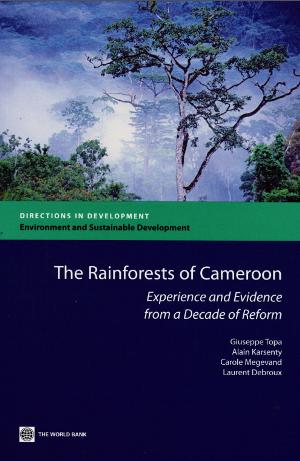Activity page

Share
Attachments
CAM_Reform process_FINAL_web_0.pdf
Cameroun-Forets-tropicales_0.pdf
Keywords
Authors/Partners
World Bank Africa
The Rainforests of Cameroon: Experience and Evidence from a Decade of Reform
Starting in 1994, Cameroon introduced legislative and market-based reforms to regulate the rights to use and benefit from the country’s rich rainforests. These reforms sought to balance public and private interest and integrate wider economic, cultural, and environmental perspectives. Today, more than 60 percent of Cameroon’s rainforest are under management systems that emphasize sustainability. Biodiversity is better protected, illegal logging in managed areas has declined sharply, and the forest industry has restructured and adopted internally recognized forest management practices.
To give greater momentum to and extract lessons from a decade of reform in Cameroon's forest sector, PROFOR supported the publishing and French translation of The Rainforests of Cameroon: Experience and Evidence from a Decade of Reform. The report, written by the World Bank's Africa Environment team, analyzes the process of forest sector reform in Cameroon: its phasing, technical, political, and economic drivers, achievements, shortcomings, and lessons learned.
Based on historical data, original research, and counterfactual analyses, the report describes how these reforms played out. The book identifies which policies worked, which did not, and what can be improved.
Working from the report, the team drew lessons for reform processes more broadly, of relevance to other sectors and regions. Those lessons are captured in a PROFOR knowledge note entitled "Policy Reform Lessons: An Example from the Forestry Sector in Cameroon."
For stories and updates on related activities, follow us on twitter and facebook , or subscribe to our mailing list for regular updates.
Author : World Bank Africa
Last Updated : 06-16-2024

Share
Related Links
Moving Towards Sustainable Timber Markets in the Forest-Rich Congo Basin
Keywords
Congo Basin Timber
CHALLENGE
Population growth and economic development are contributing to rising demand for wood and wood
products in Africa, offering new opportunities for local producers to tap domestic markets, and also with profound implications for the forests of the Congo Basin.
APPROACH
Much work has been carried out on the informal and formal logging sector in the Congo Basin region; this study focuses on wood transformation and examining local demand for processed wood products. This research aims to build on prior knowledge to better understand the solutions needed to overcome barriers to expanding the market for legal (and sustainable) timber and processed wood products used in the domestic furniture and construction markets in Cameroon and DRC. Through data collection and analysis, new knowledge was developed regarding the current and future capacities of timber companies to provide wood for public buildings, housing and furniture for the domestic market. In addition, the analysis looks at how wood is currently sourced, and, if not sourced domestically, why. This will help gauge the potential to grow the productive use of wood in these countries. To this end, options for policies and targeted investments to increase the proportion of domestic, locally sourced wood have been identified.
RESULTS
The final report Congo Basin Timber: Case studies of urban wood products markets in the Democratic Republic of Congo and Cameroon was completed in June 2016. This work undertook supply and demand-side analysis for wood products. Local factors which can be capitalized on and considered opportunities include population and GDP growth, urbanization, a growing middle class, and increasing domestic demand for timber. In the short-to-medium term, development of the timber industry can be furthered through a range of action, including: supporting training and tools for better quality products; creating cooperatives to federate artisanal operators; promoting local wood products and innovative craftsmanship; sponsoring the use of local and legally-sourced wood for tourism infrastructure. In the medium-to-long term, the report recommends interventions such as creating structural paneling factories; providing a wide range in product prices; regulating taxes to favor local products; and making “local and legal” wood a national cause.
For stories and updates on related activities, follow us on Twitter and Facebook, or subscribe to our mailing list for regular updates
For stories and updates on related activities, follow us on twitter and facebook , or subscribe to our mailing list for regular updates.
Last Updated : 06-15-2024








